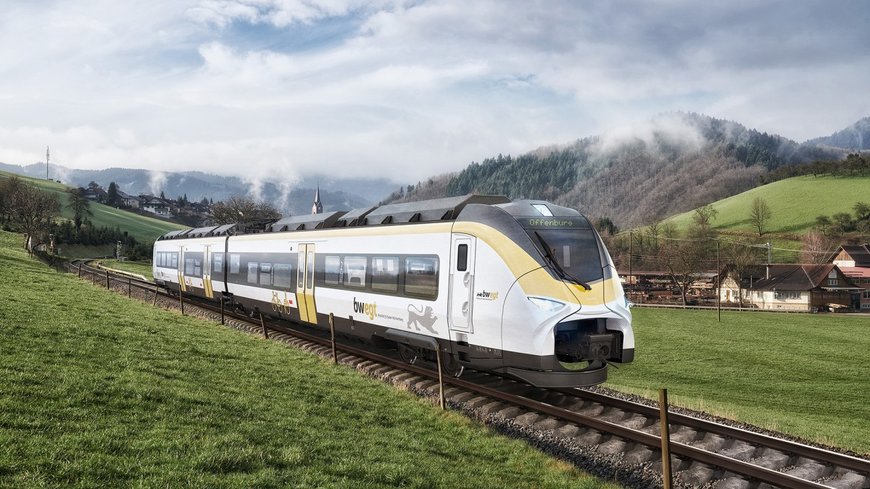
The Long Awaited Return of the Hermann-Hesse-Bahn: A Journey Through Challenges and Conservation
In the enchanting region of Calw, the anticipation for the reopening of the Hermann-Hesse-Bahn has reached heights as varied as the landscapes it traverses. Despite the excitement, a series of complications has delayed the train’s return, the foremost being the need to safeguard local wildlife, particularly a number of bat species that have made the old tunnels their home. As we dive deeper into the story, it becomes clear that this endeavor is as much about protecting our natural heritage as it is about restoring a vital transport link.
 The picturesque route of the Hermann-Hesse-Bahn, waiting for its revival.
The picturesque route of the Hermann-Hesse-Bahn, waiting for its revival.
Fledermaus Protection or Transportation Revival?
The reactivation of the Hermann-Hesse-Bahn has been described as a pioneering project in the reestablishment of decommissioned railways, with implications that stretch far beyond mere transportation. The dilemma centers around the need for conservation efforts which have put the trains on hold. The Nabu-Baden-Württemberg has reported that attempts to drive the bats away from the tunnels using sound waves have not yielded the anticipated results. In fact, several bat species seem particularly sensitive to the sonic emissions being tested.
Time is running short as winter approaches, and with it, the hibernation phase for these creatures, which complicates the trials even further.
Local Authorities Maintain Optimism
Despite these challenges, the local administration remains hopeful. The Landratsamt Calw, which oversees the project, is adamant that no stone will be left unturned. They are committed to finding flexible solutions to ensure that the train can run without disturbing its furry residents. They express a desire to utilize the upcoming months for further field tests, cementing the belief that the project will eventually come to fruition.
The Financial Weight of Eco-Conscious Efforts
However, this is not merely a logistical challenge; it is also a financial strain. Estimates suggest that the reactivation of the line could cost upwards of 160 million Euros, with an astonishing one-third of that budget earmarked solely for environmental protections. This leads us to ponder the often overlooked relationship between transportation projects and ecological conservation.
Balancing infrastructure and environmental needs can be a costly endeavour.
Historically, Calw has been at the forefront of revitalizing old railway lines, a trend that encourages sustainable transport options, yet this initiative may redefine what project budgeting entails when wildlife is involved.
The Path Ahead
As discussions continue about the best ways to navigate the complexities involved in this project, it forces us to confront broader questions about the environmental responsibilities we bear as societies. How do we weigh the need for modern infrastructure against the irreplaceable value of biodiversity? As we wait for answers from Calw’s authorities and their partners, the situation invites a deeper scrutiny of our commitments to wildlife conservation in the face of progressive urbanization.
The Hermann-Hesse-Bahn can either serve as a case study in innovative ecological solutions or a cautionary tale of neglected responsibilities. For now, it seems we are in a holding pattern, waiting not only for the trains to run but for the right balance of collaboration between conservationists and policymakers.
In the words of a prominent advocate for sustainable transport, ‘Either the train runs in harmony with the bats, or it does not run at all.’
As we flip the pages of this ongoing saga, the next chapters will undoubtedly unfold with a blend of hope, innovation, and respect for the natural world that surrounds us. It remains to be seen whether the collective efforts will lead to a successful reopening in the upcoming year, but for the residents and advocates of Calw, the ride towards sustainable transport is far from over.
Conclusion
In conclusion, the story of the Hermann-Hesse-Bahn is one that encapsulates the tensions between progress and preservation. As the project continues to evolve, so too does our understanding of what it means to forge a future where civilization coexists with nature. The outcome will not only influence how transportation is envisioned in Calw but may serve as a larger lesson for other regions grappling with similar challenges. The hope remains that as we tread this delicate path, the seemingly divergent interests of transportation and conservation can find a way to harmoniously align.
Images of a hopeful future for integrated travel.
In the end, it will be the decisions we make now that will shape the landscapes of tomorrow. This is just the beginning of a crucial journey that promises to lead us through a landscape rich with both history and hope, guided by principles of ecological integrity and progressive infrastructure.












